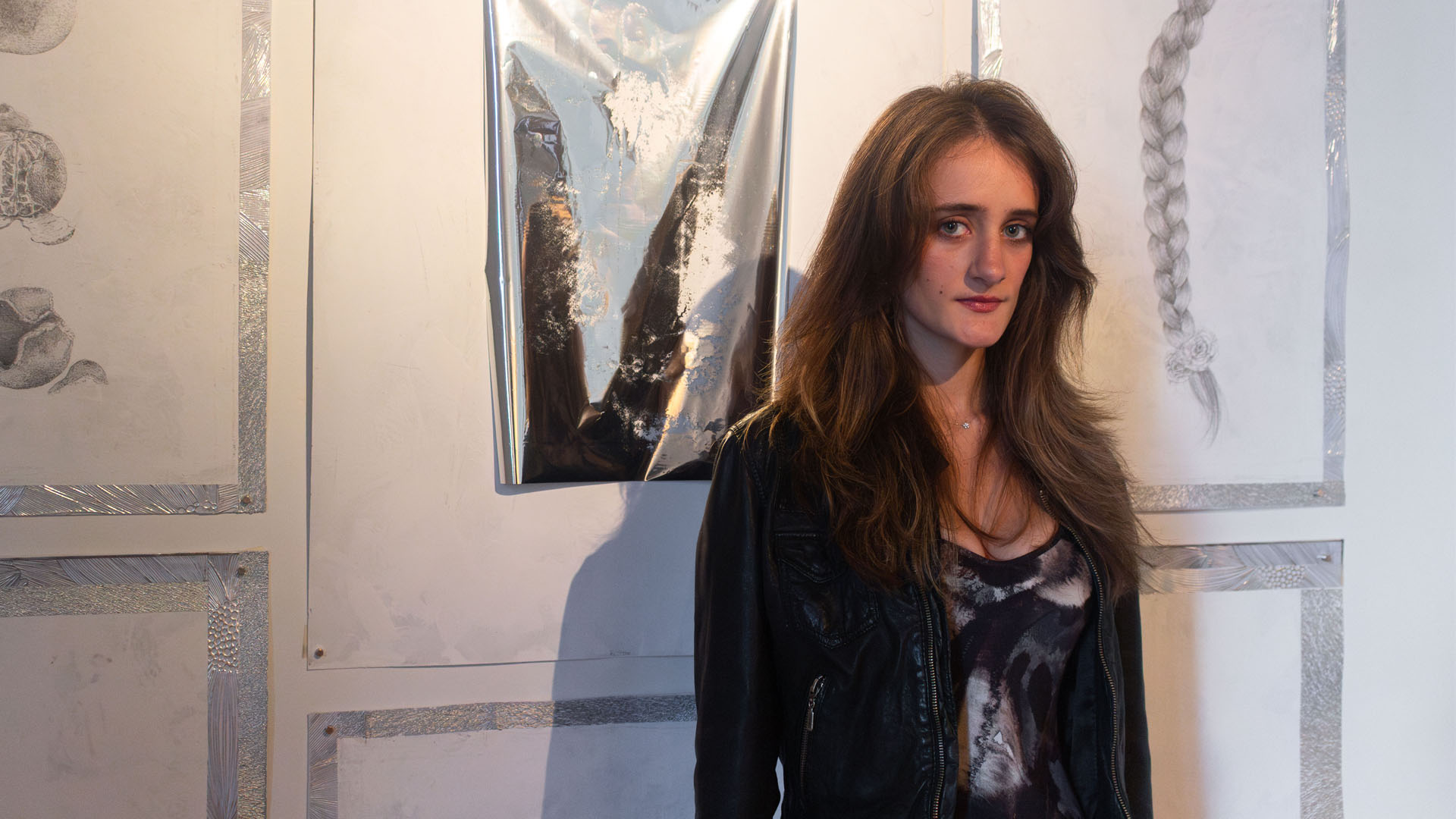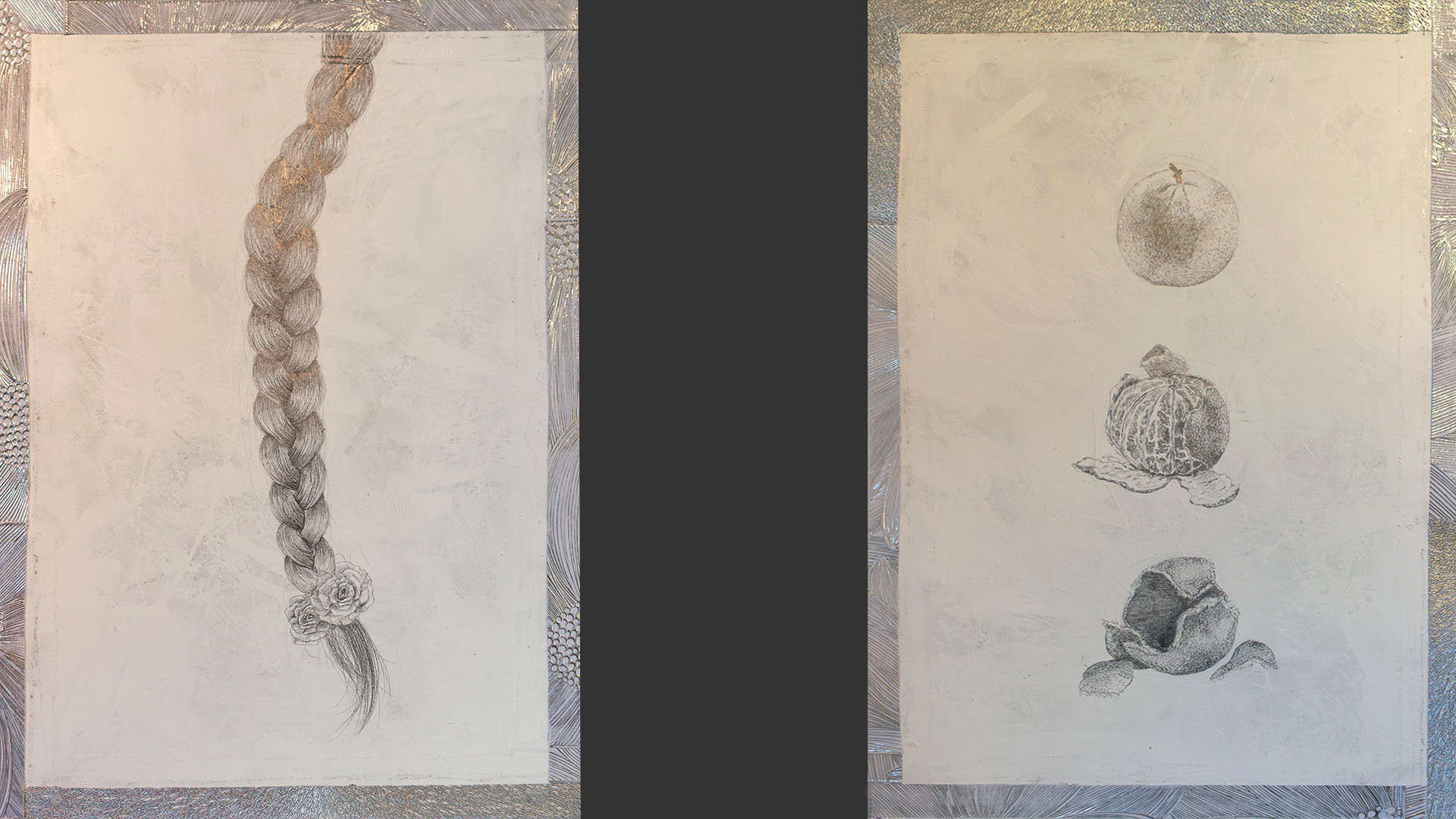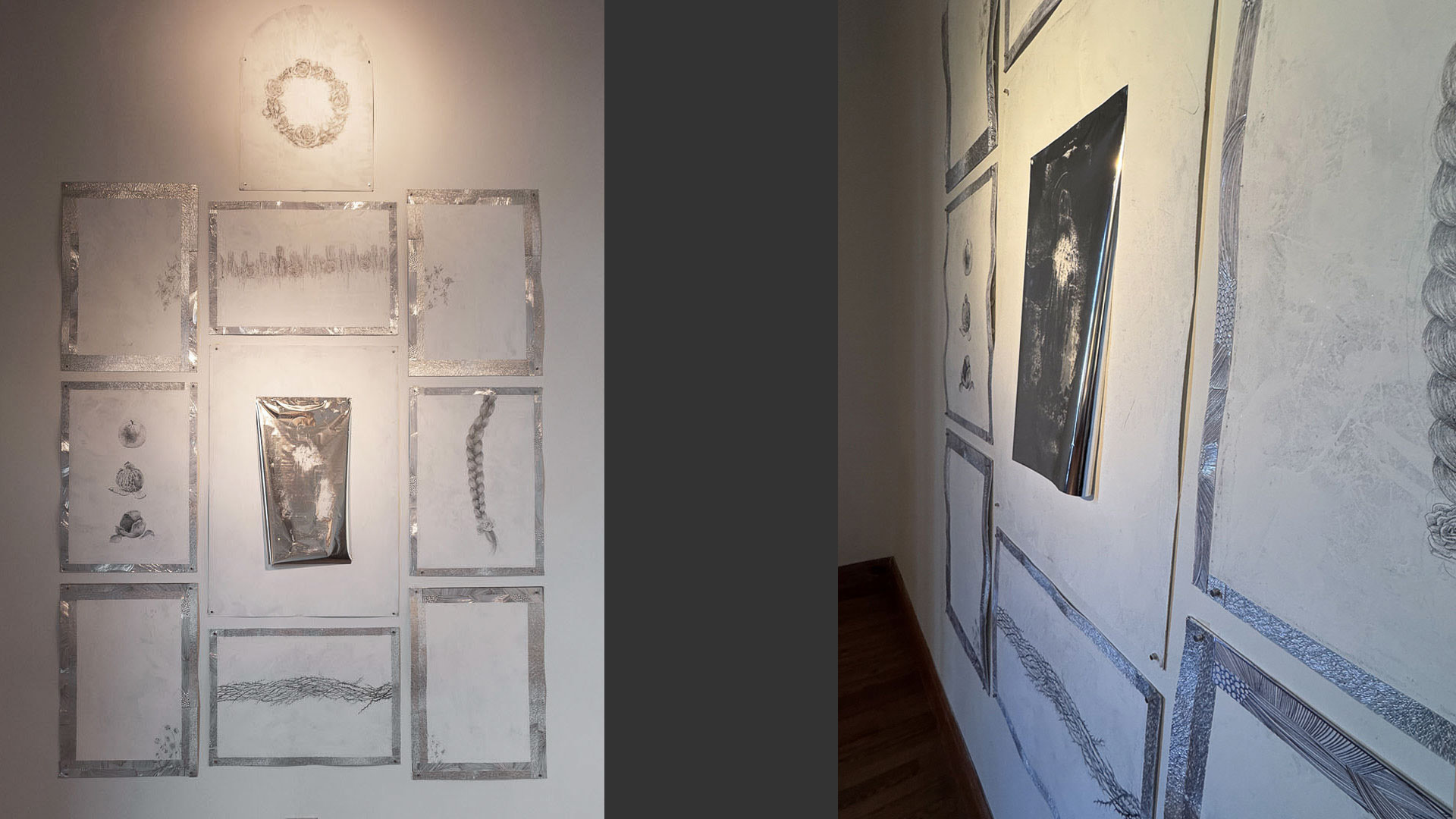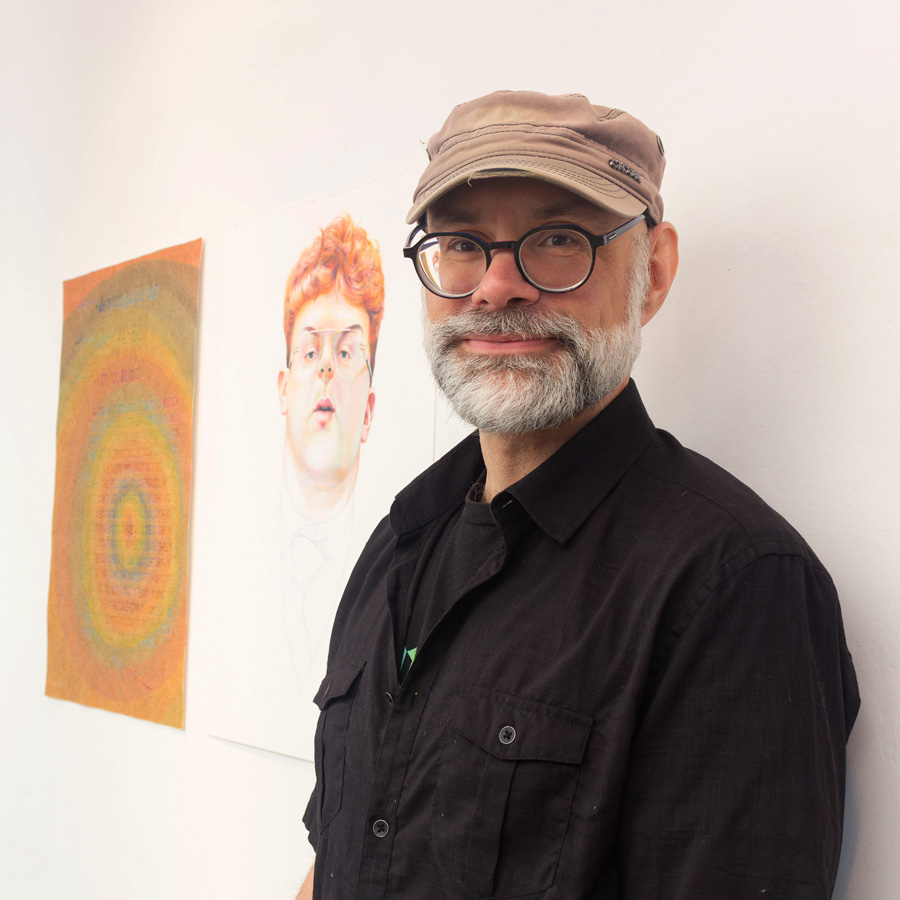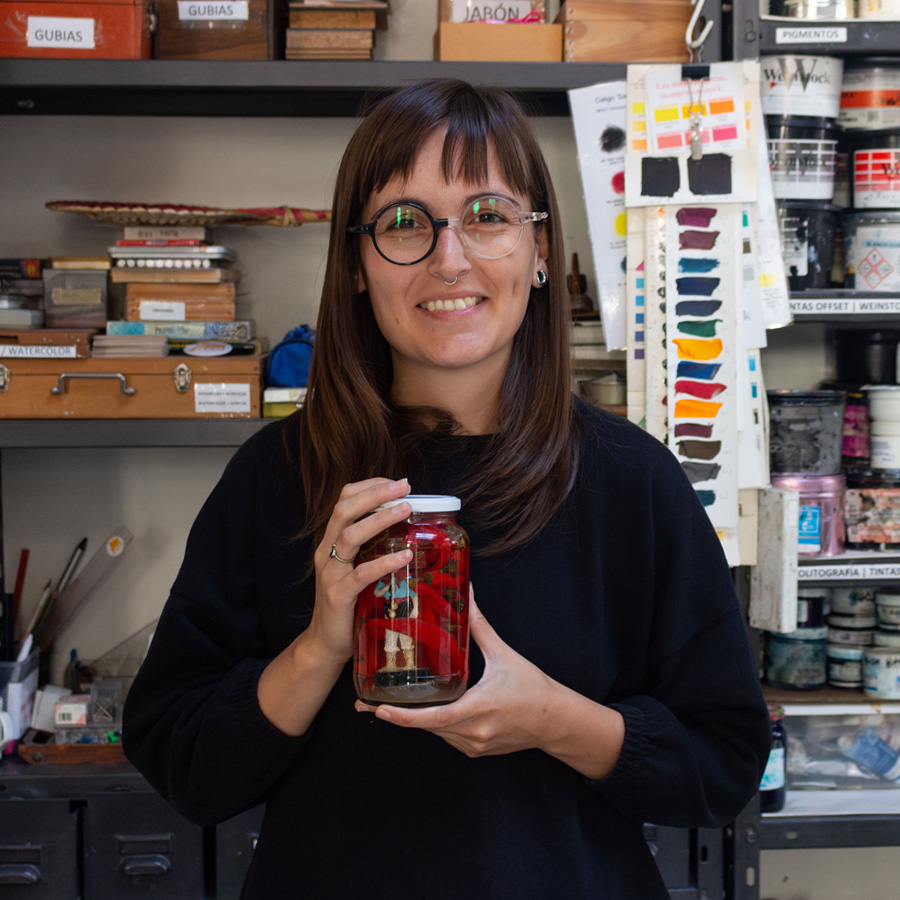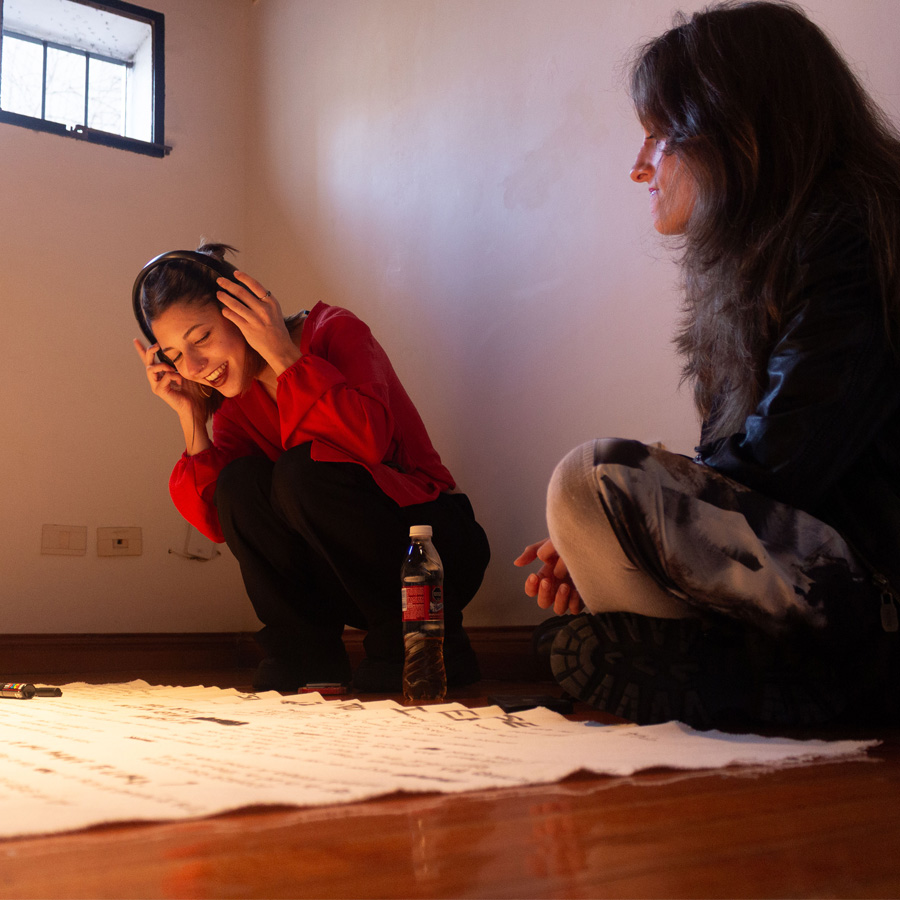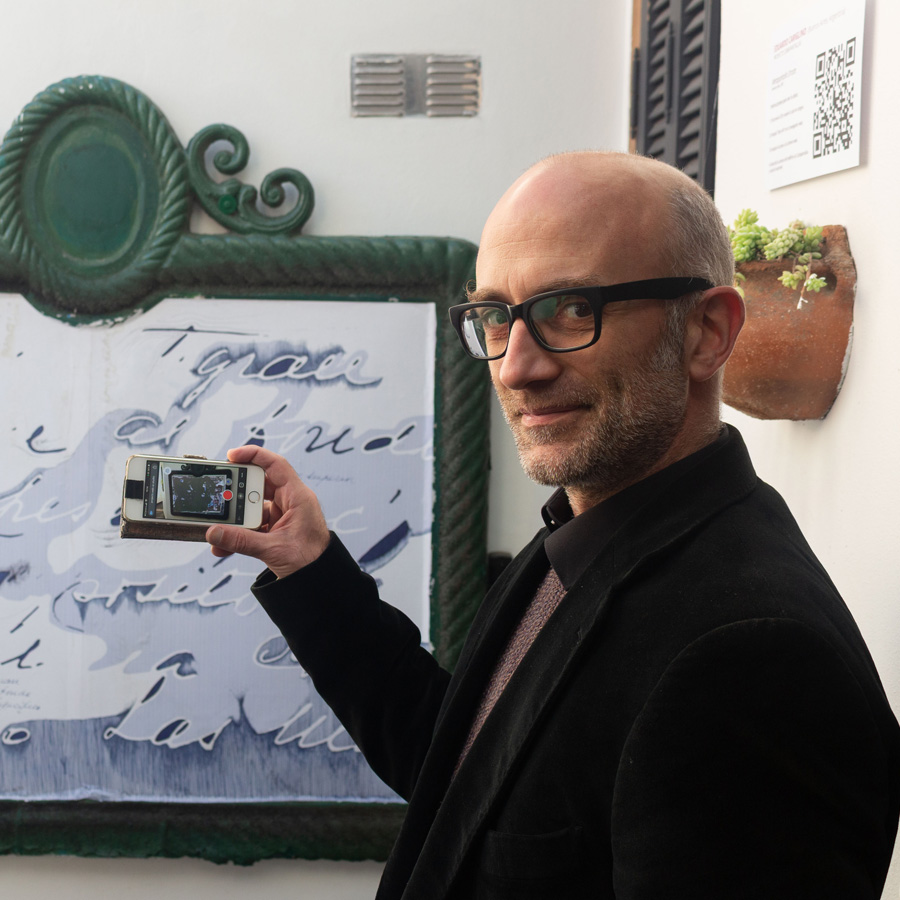Artists
Peru
Valeria Guerra
Altars of Absence
26.05.25 20.06.25
Valeria Guerra-Garcia is a multidisciplinary artist working in painting, printmaking, installation, and video. Her practice explores faith, devotion, and sacrifice, focusing on the power dynamics between worshiper and worshiped. Rooted in her Catholic upbringing, her figurative paintings evoke the tension between reverence and suffering, while her videos extend these narratives through movement and ritual, bringing her painted figures into a living, temporal space. Through immersive altars, she invites viewers to confront silence, prayer, and the longing for divine response.
During her time at ´ace, Valeria had time and space to experiment with materials and techniques that allowed her to expand her practice in new directions. This materialized in an installation titled Now You Pray: fragment of the Hail Mary, which took the form of a Peruvian altarpiece without seeking to exalt the sacred. Instead of gold and wood, the altar is made of cardboard, plastic tablecloths, and graphite, materials that speak of the ephemeral and discarded. Devotion here is not a firm truth but a constant erosion in the attempt to sustain itself. A sacrifice that occurs unseen. A faith that is exercised without reward. The work does not seek to produce faith, but to expose its mechanisms: what it asks for, what it takes, what it leaves behind. This altar is not a promise. It is an open question that remains in the viewer’s body. How much can be offered before disappearing? When does it cease to be faith and become punishment?
ARTIST STATEMENT
My work explores sacrifice, devotion, and ritual through the lens of womanhood and queerness. Through figurative oil paintings and print-based installations, I examine the unbalanced relationship between the worshiper and the worshiped—questioning the silence that follows unanswered prayers. Saints and sacrifice intertwine in my paintings, evoking the violence of devotion, where suffering is both a path to divinity and a spectacle. Sacrifice is woven into womanhood and queerness—an expectation, a duty, a quiet surrender. My figures inhabit intimate spaces of worship, shaped by the Catholic culture of my upbringing in Lima, Peru. Isolated and uneasy, they embodied faith’s demands on queer bodies and femininity, reflecting the violence of devotion and the expectation of submission. My print-based installations extend this narrative into space, centering text as both relic and residue of belief. The repetition of text in my print-making work acts as a ritual in itself. The act of printing the same word on iterations of the same object becomes a ritual and prayer, where the text can be read as a mantra or plea. The altars I create using the printed objects as their conceptual center become spaces of ritual that highlight the dynamic of the worshipper and the worshiped, turning the viewer into both subject and outsider. The altar becomes a reflection of the viewer’s relationship with worship, exploring the deep desire for answers that is rooted in prayer, faith, and queerness.
BIO
Valeria Guerra Garcia
2001 | Lima, Peru
Lives and works in Lima, Peru
EDUCATION
2025 | Bachelors Degree in Fine Arts. Ringling College of Art and Design, USA
EXHIBITIONS
2025 | Saints on Tape. Crossley Gallery, USA
2025 | Oddities. Crossley Gallery, USA
2024 & 2025 | Best of Ringling. Roskamp Exhibition, USA
2024 | Emotional Gifts. Crossley Gallery, USA
2024 | I am Who I Am. Crossley Gallery, USA
RESIDENCIES & AWARDS
2024 | Chautauqua Residency, NY, USA
2023 | New York Academy of Art Residency, NYC, USA
2025 | Women’s Caucus for Art Scholarship award
2024 | Ringling College Fine Arts Trustee Scholar award
2021-2025 | UWC Davis Scholar award
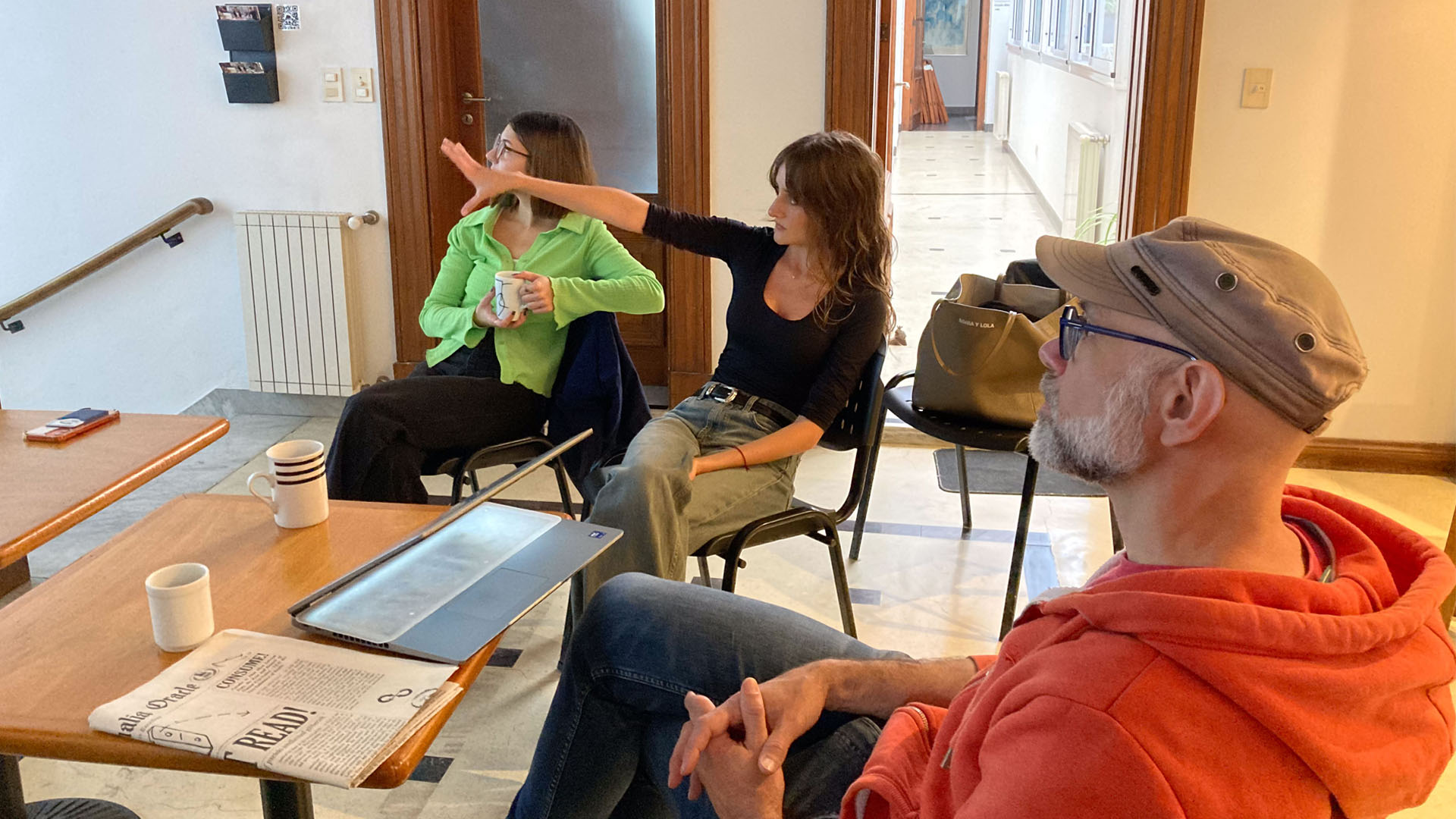
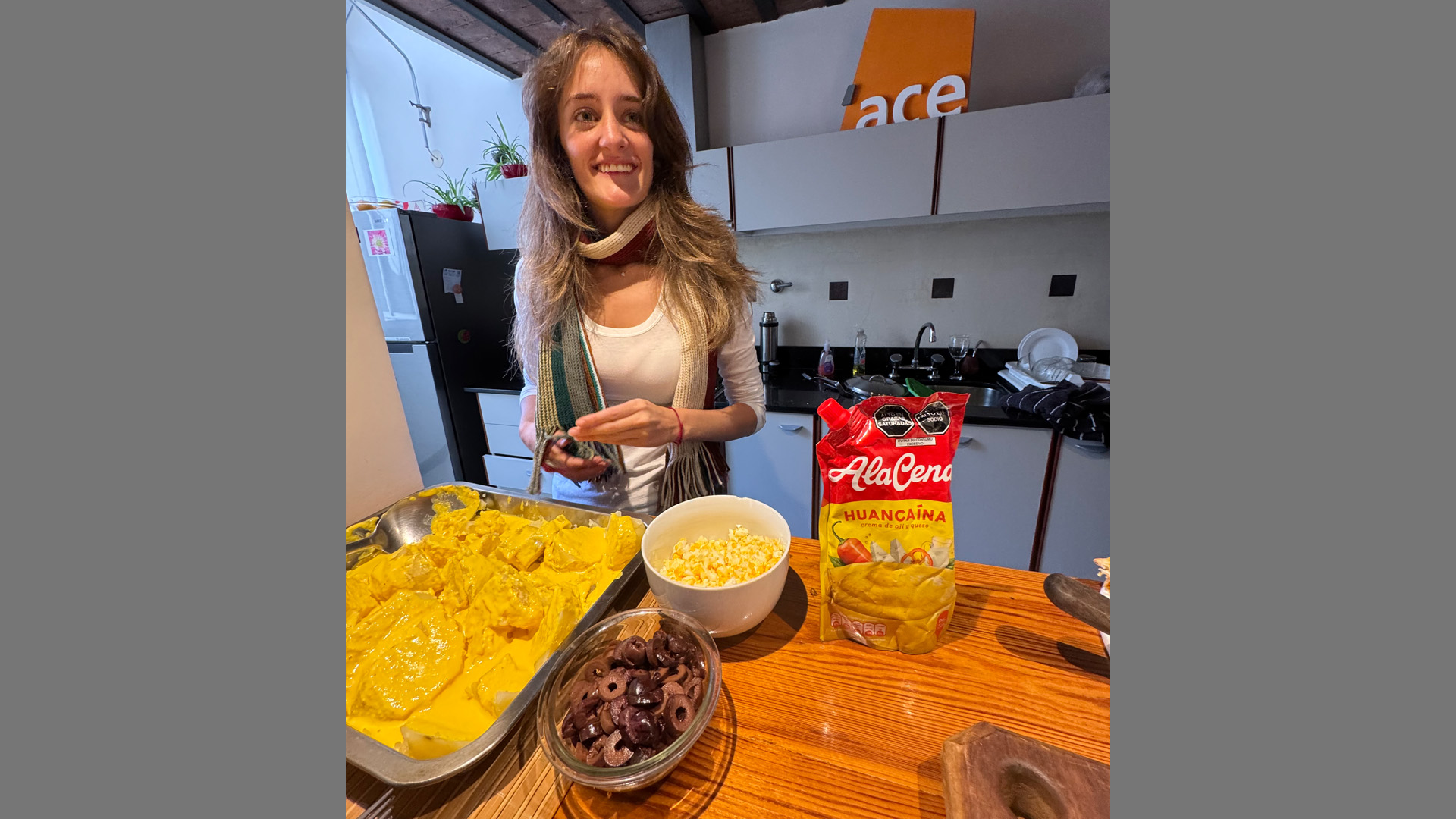
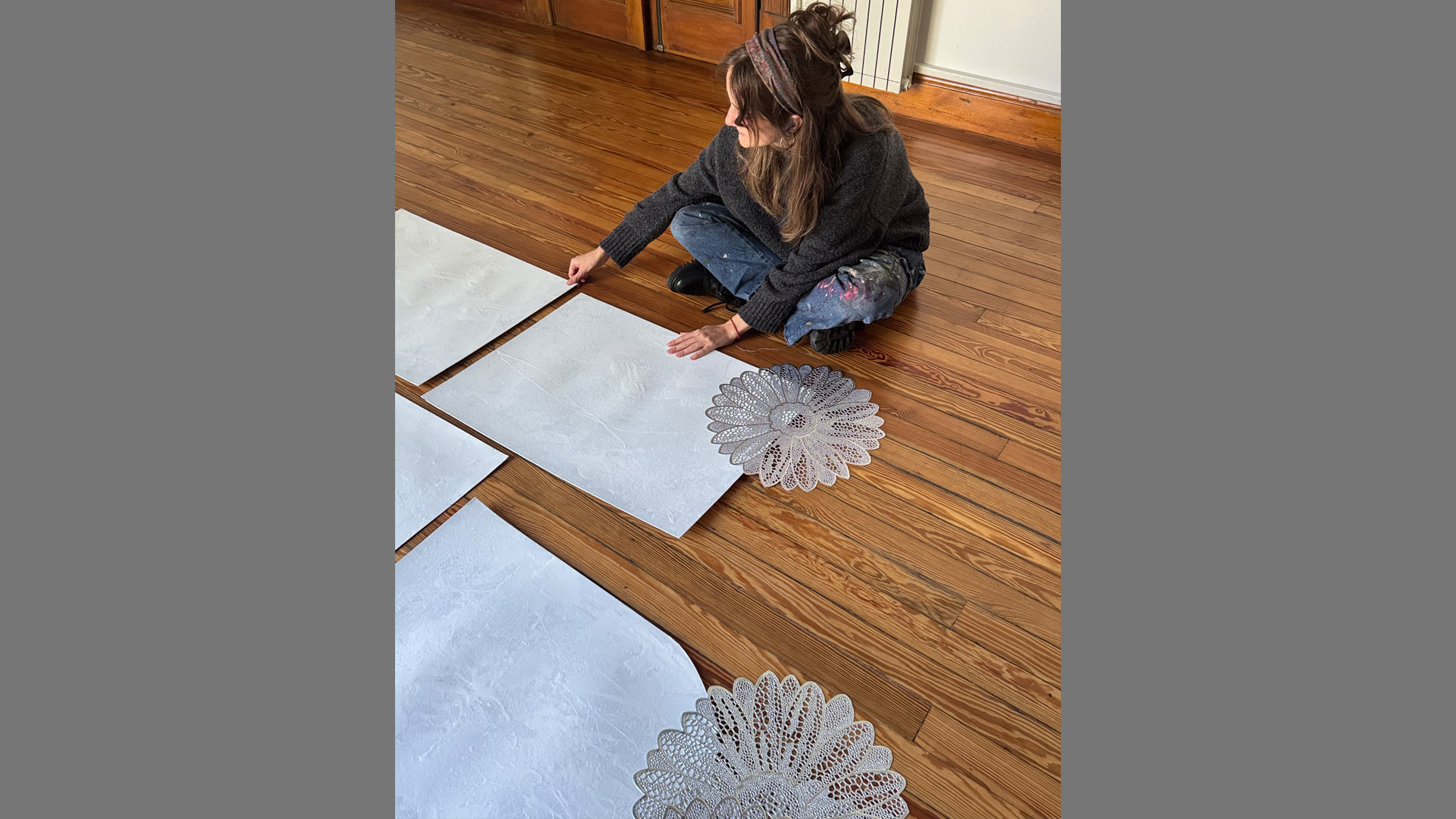
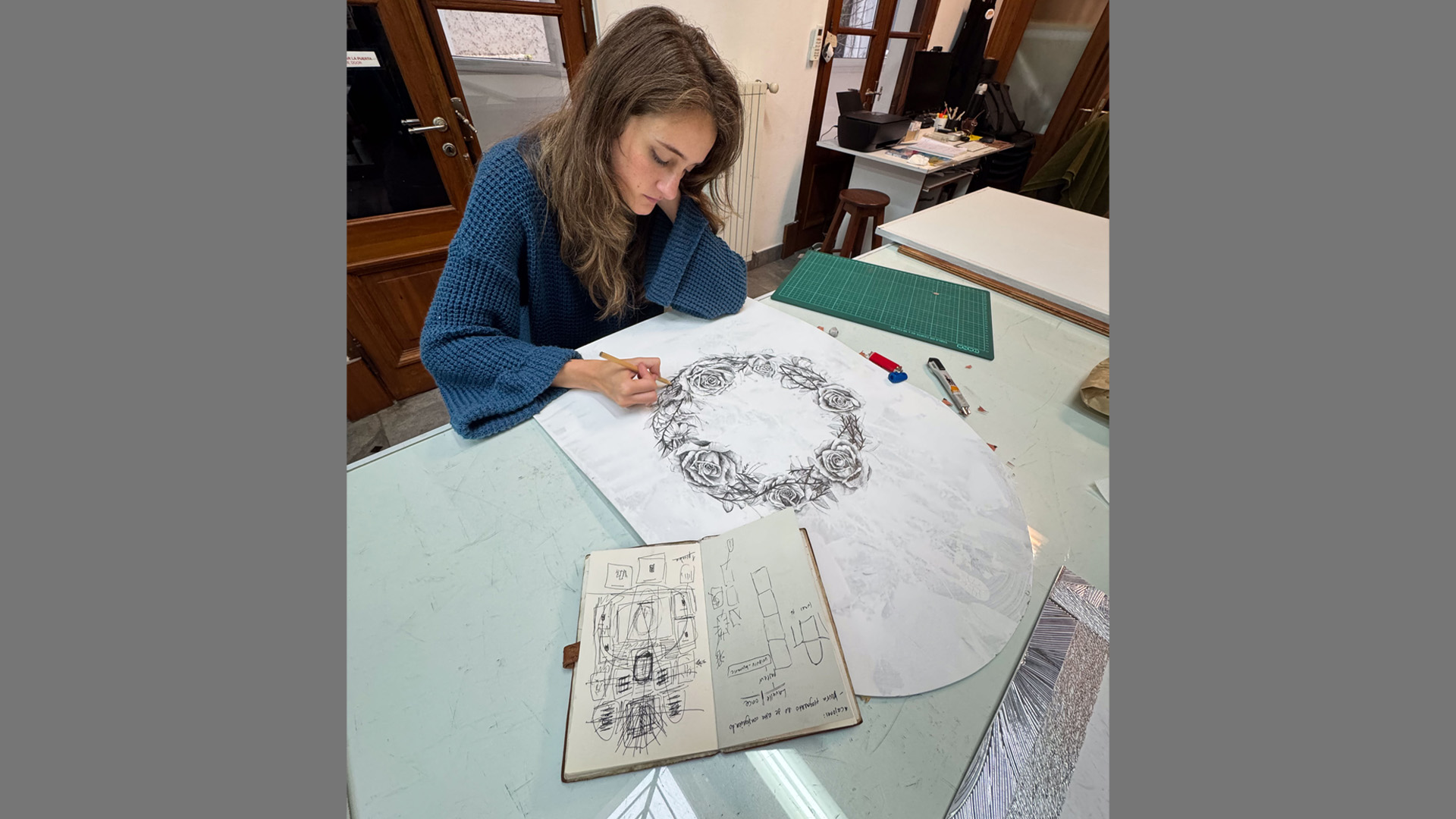
Related Activities
Exhibitions, Open Studio
Saying is Resisting
Artists in Dialogue
18.06.25
At the June 2025 Open Studio, four resident artists — Rollin Beamish (USA), Romina Bonomi (Uruguay), Valeria Guerra (Peru), and Eduardo Carigliano (Argentina) — explored forms of expression as acts of resistance against the political, the intimate, the sacred, and the virtual.
Rollin Beamish uses satire to reflect on the decline of imperial power, particularly the impact of speculative American capital on the Argentine economy, through his series a Dept. — Beasts of Melancholia. His works reveal the absurdity and paralysis of a present marked by political and economic tensions, turning thought itself into a gesture of resistance.
Romina Bonomi engaged in automatic writing as a daily practice to inhabit an introspective femininity shaped by family memories, Río de la Plata culture, and inner conflicts. Her words written on canvas transform self-absorption into a form of affirmation.
Valeria Guerra created an altar made of cardboard and engraved text, where devotion is revealed not as certainty but as a persistent tension between faith, sacrifice, and queer desire. Her work embodies a spirituality without promises, where surrender seeks meaning rather than reward.
Eduardo Carigliano presented a virtual reality intervention within his Proyecto Carapantallas, an immersive work that directly challenges the viewer’s certainties and provokes reactions. His practice aims to activate the audience by generating friction around issues such as politics, climate, economy, psychology, and society, using art as a tool to unsettle, move, and rethink positions.
Through body, word, image, or digital immersion, these four artists assert that the act of expression — in all its forms — is already a gesture of resistance.









Exhibitions, Open Studio
Now You Pray: Fragment of the Hail Mary
Valeria Guerra
18.06.25
On the afternoon of Wednesday, June 18th, we opened the ´ace studio so that the artists in residence from the May-June period could share their creative processes and the results of their projects with the local public. There, Valeria Guerra (Perú) presented Ahora ruega tú: fragmento del Ave María (“Now You Pray: Fragment of the Hail Mary”), an installation in the Sala Políglota of the ´ace studio.
This altar-like installation, made not of gold and wood as would traditionally be the case, but of non-sacred materials such as cardboard, plastic, and graphite, speaks of the ephemeral and the discarded without seeking to exalt the sacred. Devotion remains, albeit eroded and fragmented. Devotion here is not a firm truth but a constant erosion in the attempt to sustain itself. In the center, the Virgin is presented as a negative image. It refers to the mantle that, according to tradition, preserved the face of Christ, but here that imprint is the shadow of Mary. The figure offers no comfort, becoming a presence that demands without promising and challenges without looking. Around her, hair, thorns, oranges, and candles are drawn in graphite. Each alludes to the body and silent devotion. A sacrifice that takes place unseen. A faith that is exercised without reward. The work does not seek to produce faith, but rather to expose its mechanisms: what it asks for, what it takes, what it leaves behind. This altar is not a promise. It is an open question that remains in the viewer’s body. How much can be offered before disappearing? When does it cease to be faith and become punishment?
Related artists

